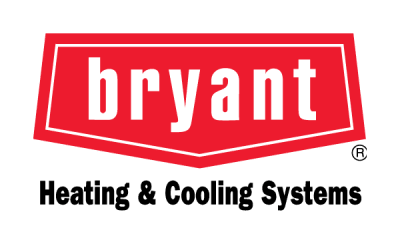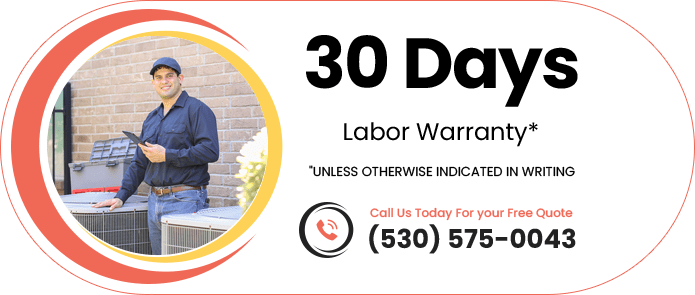Did you know that the air inside your home can be more polluted than outdoor air, posing unseen health risks to you and your family? Indoor air pollutants are common yet easily overlooked, and they can significantly impact your overall well-being. As we spend the majority of our time indoors, understanding the hidden hazards these pollutants pose is crucial for maintaining a healthy living environment.
We will explore the most common indoor air pollutants, their health implications, and effective tips for reducing their presence in your home. By educating yourself on these potential risks and implementing strategies for improved indoor air quality, you can protect your family’s health and enjoy a cleaner, safer, and more comfortable living space.
Rely on our team of Heating, Ventilating & Air Conditioning (HVAC) experts to help you optimize your indoor air quality and breathe easy, knowing your home environment is a sanctuary for your family’s health and well-being.
Common Indoor Air Pollutants
To protect the health and well-being of your household, it’s essential to be aware of the most common indoor air pollutants. Many of these pollutants stem from everyday household items and activities, making them quite pervasive throughout our living spaces. Some of the most frequently occurring indoor air pollutants include:
- Volatile Organic Compounds (VOCs): These chemical compounds are prevalent in many household items, including cleaning products, paint, building materials, and air fresheners. VOCs can cause health issues such as eye, nose, and throat irritation, headaches, and even damage to the liver, kidney, or central nervous system.
- Biological Pollutants: This category includes molds, bacteria, viruses, pet dander, and dust mites, which can lead to respiratory issues, infections, and allergic reactions. Biological pollutants can thrive in damp and poorly ventilated areas of your home.
- Combustion Pollutants: These pollutants are generated by burning materials (e.g., gas, wood, or oil) in appliances such as stoves, fireplaces, and furnaces. Carbon monoxide (CO) and nitrogen dioxide (NO2) are common combustion pollutants, which can cause symptoms like headaches, dizziness, and respiratory irritation.
- Radon: A colorless, odorless radioactive gas produced by the breakdown of uranium in soil and rocks. Radon can seep into buildings through cracks in floors, walls, or foundations. Long-term exposure to radon can increase the risk of lung cancer.
Identifying the Presence of Indoor Air Pollutants
Detecting indoor air pollutants can be a challenging task due to their often invisible or inconspicuous nature. However, there are some warning signs and indicators that you can look for within your living space. These include:
- Odors: Persistent or unusual smells within your home can indicate the presence of pollutants, such as VOCs or combustion pollutants.
- Visible Mold or Mildew: Dark spots on walls, ceilings, or near air vents can be a sign of moisture issues and the growth of mold or mildew.
- Health Symptoms: If you or other household members experience persistent respiratory issues, skin irritations, or worsened allergy symptoms, it could be an indication of poor indoor air quality.
By staying vigilant and paying attention to these warning signs, you can take proactive measures to address any existing or potential air quality issues in your home.
Effective Strategies for Improving Indoor Air Quality
There are numerous ways to combat indoor air pollutants and improve the overall air quality within your living space. Here are some practical steps to help you create a healthier indoor environment:
- Regularly Clean and Maintain Your HVAC System: Ensuring that your heating, ventilation, and air conditioning (HVAC) system is clean and properly maintained is crucial for optimal indoor air quality. Schedule regular service visits for a thorough inspection, cleaning, and maintenance of your system.
- Use Low-VOC or VOC-Free Products: Opt for household products with low or zero VOCs, including cleaning supplies, paint, and building materials. This can significantly reduce the amount of VOCs released into your indoor air.
- Control Moisture Levels: Invest in a dehumidifier and maintain proper ventilation in your home to control humidity levels, deterring mold and mildew growth.
- Regularly Clean Your Home: Keep your home clean by regularly vacuuming and dusting to remove allergens like dust mites and pet dander. Also, wash bedding and other fabrics frequently to further minimize allergens.
- Install Carbon Monoxide Detectors: Protect your family from the dangers of carbon monoxide poisoning by installing CO detectors near sleeping areas and on every level of your home.
- Test for Radon: Conduct radon testing in your home to determine if you have elevated levels of this dangerous gas and take remediation steps if necessary.
Prioritize Ventilation for Optimal Indoor Air Quality
Adequate ventilation is crucial for maintaining healthy indoor air quality and reducing the concentration of pollutants in your home. Ensure that your HVAC system and air filters are functioning properly and are well-maintained. Additionally, consider using air purifiers or installing a whole-house ventilation system to efficiently remove pollutants from your home’s air. Utilize exhaust fans in areas where moisture or pollutants may be more prevalent, such as kitchens and bathrooms. By prioritizing proper ventilation, you can create a healthier, more comfortable living space for you and your loved ones.
Armed with this knowledge of common indoor air pollutants and effective strategies for improving indoor air quality, you can take proactive measures to create a cleaner, safer, and healthier home environment.
Safeguard Your Family's Health with Improved Indoor Air Quality
Understanding the hidden dangers of indoor air pollutants and their potential health impacts is crucial for maintaining a safe and healthy living environment. By identifying the presence of common pollutants, implementing effective strategies to improve indoor air quality, and prioritizing proper ventilation, you can create a cleaner, more comfortable home for you and your loved ones.
Rely on our expert heating, ventilating, and air conditioning (HVAC) services to help you optimize your indoor air quality and protect the well-being of your family. We are your trusted partner in ensuring your home is a sanctuary where you can breathe easy and live comfortably.
Contact BAEHR Heating & Air today to learn more about our comprehensive HVAC services and solutions tailored to your specific needs.







